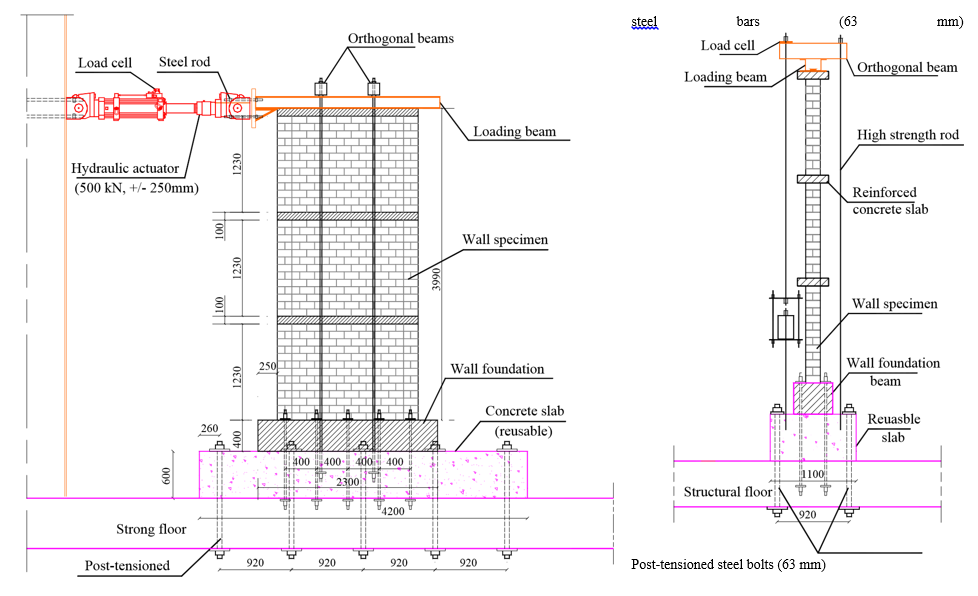B. R. Banting , M. T. Shedid , W. W. El-Dakhakhni , and R. G. Drysdale
- A.Sc. Candidate Department of Civil Engineering, McMaster University, Hamilton, ON, L8S 4L7, Canada, bantinbr@mcmaster.ca
- D. Candidate, Department of Civil Engineering, McMaster University, shedidmm@mcmaster.ca
- Martini Mascarin and George Chair in Masonry Design, Center for Effective Design of Structures, Department of Civil Engineering, McMaster University, eldak@mcmaster.ca
- Professor Emeritus, Center for Effective Design of Structures, Department of Civil Engineering, McMaster University, drysdale@mcmaster.ca
ABSTRACT
A potential drawback to reinforced masonry shear wall construction is that common practice and practical limitations result in flexural reinforcement placement as a single layer along the centre of the wall. A reinforcing pattern of this type is susceptible to stability problems under in-plane cyclic loading especially at the wall toes. Enhancing the stability of the compression toe at high deflection levels has been carried out by adding boundary elements to linear walls. Adding boundary elements to linear walls (end-confined walls) resulted in significantly improving the stability of the compression zone, delaying bar buckling and facilitated achieving high levels of deformation and ductility prior to failure. The data presented in this paper is a part of an ongoing experimental and analytical investigation of the response of reinforced masonry shear walls having variable end configuration and subjected to different axial compressive stress. This paper presents the experimental results of three end-confined reinforced masonry shear walls subjected to different axial compressive stress. The walls were tested under reversed lateral cyclic displacement simulating earthquake excitation and were subjected to axial stresses of 3%, 6%, and 9% of the experimentally obtained masonry compressive strength. Details of the test walls as well as the test setup, instrumentation and material properties are also presented. All walls demonstrated high levels of ductility at the three different axial load levels (low, typical and high) with highest and lowest ductility levels corresponding to the walls subjected to the lowest and highest axial compressive stress, respectively. Results showed that significantly higher ductility levels than currently perceived can be easily achieved through the addition of boundary elements.
KEYWORDS: boundary elements, ductility, reinforced masonry, seismic performance
A6-4



